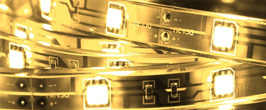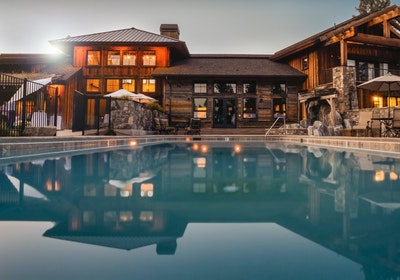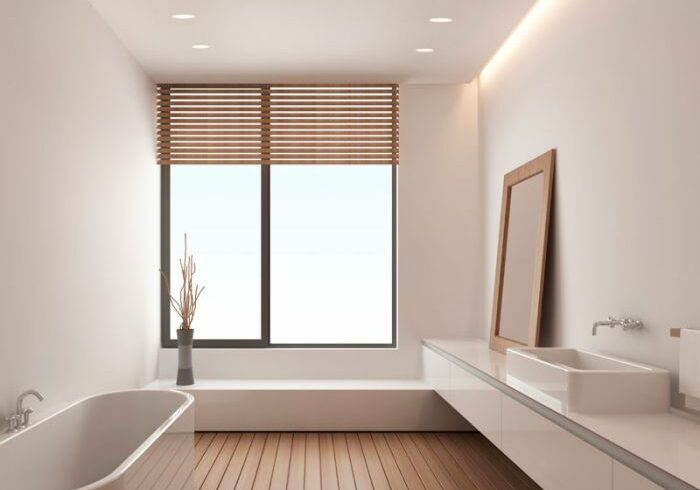Patient Bedrooms
Receptions
Wards
Waiting Rooms
Corridors
Upgrading to LED lighting
Nursing with light
Hospital lighting has changed much since the days of the Florence Nightingale. The founder of modern nursing, she worked under appalling, hopeless conditions at Scutari during the Crimean War. For those under her care, her passing dim light was symbolic of hope even amid their final hours. For her tireless work, often in 20-hour stretches, Florence became known simply as ‘The Lady with the Lamp’, and 160 years later this image of utter selflessness endures.
In the relative security of modern healthcare environments, the same noble spirit prevails; long hours are still worked and lighting still has an important part to play. Today’s hospital lighting is important to the safety and psychological wellbeing of patients, residents, and staff, and its economy is also important, so that healthcare trusts can meet financial targets and channel funds where most needed.
A new kind of light
Over the years, Lyco have been proudly instrumental in a number of lighting overhauls for healthcare providers. Always watchful of current trends and developments in the lighting industry, we are well-placed to advise on money-saving measures for hospitals, hospices, and care homes, and we do that without obligation. We offer game-changing tailored lighting solutions that improve the experience of patients, residents, and staff. We can make your energy-expenses much less onerous and your carbon footprint smaller.
Because healthcare environments are invariably threaded with high-circulation areas needing 24/7 illumination, their lighting costs are typically colossal by any normal standards. It can account for up to 40% of a hospital’s energy costs. Even low-circulation areas can be unnecessarily problematic, since light tends to be always on when it might easily be controlled by motion detectors.
It won’t surprise many people to find LED at the heart of most modern lighting solutions. LED is, quite simply, one of the most revolutionary technologies to have emerged in recent times – arguably in our lifetimes. It has the power to affect people’s lives, regardless of their standing, across the world.
That LED is vastly more energy-efficient than incandescent lighting is a well-documented fact. It might cynically be construed as something of a mismatch, but fluorescent lighting isn’t spared from the LED salvo.
The best of high-frequency fluorescent luminaires are extremely energy-efficient, but in replacing a dated fluorescent lighting scheme with LED, and installing money-saving measures such as dimmers and occupancy detectors, your premises might easily achieve a 60-70% reduction or more in energy bills, whilst also drastically reducing carbon emissions. That figure increases substantially when replacing tungsten lighting systems.
Less energy, less bacteria
Installing LED into a healthcare environment will have a drastic effect on energy consumption and your carbon footprint, but it can also be useful in preventing the spread of bacteria and germs. Because lighting maintenance is virtually eliminated, there’ll be no regular changing of bulbs to unsettle dead bugs, bacteria, and dust. For the same reason – because LED units don’t need to be accessed – their housing can be comprehensively sealed and thus protected against bacteria.
Many areas of the healthcare environment can be catered for by Lyco. Here a few a few ideas:
Patient Bedrooms
In a patient’s bedroom a warm-coloured light can create welcoming, soothing effect, whilst also flattering skin tones and providing a general feeling of wellbeing. For overall bedroom lighting, recessed downlights such as the Luceco F-Eco offer a high specification, and using just 5W of power they’ll potentially save heavily on energy costs.
The Luceco ceiling luminaire is tightly sealed against dust or water with an IP65 Ingress Protection rating, and it’s also fire-rated to 90 minutes. Dimmable and non-dimmable lights can be bought in this range, with dimmable lighting allowing further opportunity to simultaneously create ambience and save energy.
Also for bedrooms, dedicated reading lights will encourage patients to pick up a book, especially since they’re invariably switched and easy to turn on and off. Wall-mounted LED reading lights are space-conscious, and extremely energy-efficient. Take a look at our Edit Eye ranges of adjustable white reading lights, any of which offer long term value for money as the last for years. A 5-year manufacturer’s guarantee gets you started with any of those.
Back to top
Wards
Wards pose particular problems, since bedded areas need to be individually lit for examination with privacy curtains closed. Wall-mounted, bed-head lights with minimal glare are often used over beds, which are specialist medical lights.
For general ward lighting, recessed ceiling lights are an option. Recessed flat panels leave no surface for bacteria and dust to gather, and with lifespans of over 40,000 hours, they require little maintenance.
LED ceiling panels are a good fit for many areas of a healthcare environment, so you might also consider them for corridors, bedrooms, and waiting rooms.
Back to top
Corridors
Special consideration has to be given to corridors in a healthcare environment. The elimination of glare is an important factor, especially since patients and residents are sometimes likely to be seated in a wheelchair or supine. So lighting needs to be sufficiently diffused.
To comply with European 12464-1 Standards, users of any building should not have to pass from a bright-light area, such as outdoors, or a projection-room, into a darkened corridor. For healthcare premises the recommended corridor illuminance is 200 lux at floor level, though it can drop to 50 lux at night.
One of the more significant ways a hospital or other healthcare building can save money is to use occupancy detection technology in little-used corridors, stairwells, or utility rooms. Essentially this allows you to keep lights almost permanently extinguished in areas where they were previously kept on!
An occupancy-detection solution can be installed with products such as the Luceco Eco LED Flush Light, which is configurable as a master and slave lighting scheme, where the master light initially detects movement and triggers all other lights in the circuit. In other words, when someone approaches or opens a door to a corridor it will be immediately lined with light, which will automatically switch off in the absence of movement and after an adjustable amount of time.
The Prodisc ‘master lights’ use a microwave movement detector, which is beneficial for being discreetly concealed inside the fitting. Also in the Prodisc range is an emergency light, which can be seamlessly blended with regular lights for the sake of visual harmony!
As previously mentioned, LED Panels are also a good choice of corridor lighting, with a diffused output that provides good coverage whilst being absent of any glare.
Back to top
Receptions
Receptions need to be immediately identifiable, so here more than anywhere else in a healthcare environment, lighting can afford to be a little more decorative and eye-catching. Pendants are a commonplace solution for lighting the counter. Contemporary solutions from Edit such as the Edit Rondure might suit here, which can be fitted with a lamp such as the Envirolight 10W Warm White LED GLS Screw Cap for energy efficiency. This shade focuses light where it’s needed, whilst shielding the lamp from easy vision for minimal glare. A bayonet version of the same bulb exists, for any existing shades in reception or waiting areas.
Recessed downlighting is also commonly used in reception areas as general lighting. Dedicated LED downlights are usually super-efficient, because they’re built from the ground up for performance and luminous efficacy. Because such lights require no maintenance they can be comprehensively sealed, so no dust gathers, and water cannot permeate.
Accent lighting can also be used in reception areas, to highlight artworks, or simply architectural features for added visual interest. We have a range of track and spot lights that have 360% rotating light head. With flexible lighting such as these, you can shine light to the areas you choose and reduce glare elsewhere.
Back to top
Waiting rooms
Some of the previously mentioned LED ceiling panels and downlights provide high quality, balanced lighting in waiting rooms. A warm light in these areas helps patients to relax, though it should be used in conjunction with natural daylight wherever possible, which helps to connect visitors to the outside world and makes them feel less isolated. Dimmable solutions can work well, because then ambient light can be controlled in accordance with the intensity of incoming daylight. The ceiling panels, however, produce a wonderfully diffuse and evenly spread light that looks very natural, and these can be easily installed into existing 600mm x 600mm ceiling grids.
Depending upon the type of waiting room, lighting in these areas can be more decorative, and designed again to make people relax. Coffee tables and wall, table, or floor lamps are not uncommon adornments, and in many cases will be served well by one of the previously mentioned LED lamps. The Parma 160 LED Wall Light is a dedicated fitting from Astro requiring something of an up-front investment, but once installed will yield many years of unmaintained service, thanks to its brace of top-quality Cree LEDs. This light produces a relaxing up-and-down effect and has a beautifully smooth plaster finish.
Back to top
An LED conversion
Though LED lighting is expected to eventually fall in price through cheaper industrialised processes, the money businesses and institutions burn through inefficient lighting schemes makes the waiting game an expensive one! An LED conversion requires a significant up-front investment, but without exception all investors in LED conversion see a payback on that investment within a short space of time.
Healthcare ‘businesses’ of all types, including healthcare trusts, private hospitals, hospices, and care homes, can vastly decrease energy usage and carbon emissions with a switch to LED. If you’re running an outdated incandescent or fluorescent lighting scheme, you are very welcome to get in touch with Lyco, who will survey your premises free of charge and without obligation, and deliver a document detailing the likely return on any investment.
From there, if you’re ready, we can take you through the various stages of an LED conversion, including product selection, finance plans, project planning and scheduling, and installation. From that point onwards you’ll be saving money, and we’ll provide you with ongoing support to address any of your future lighting concerns or needs. Call us today to learn how we can help!
Back to top
“Little as we know about the way in which we are affected by form and colour and light, we do know this: that they have an actual and physical effect.” Florence Nightingale
For more advice, inspiration and news take a look at our Lighting Advice section.
Andrew Evangelidis Head of Buying
Andrew is an experienced buying professional who takes an entrepreneurial approach to identify new lighting solutions and ensure Lyco have first-to-market ranges for our customers. Having previously worked for well known brands such as Wickes, Carphone Warehouse and Toys R Us, Andrew has now turned his hand to sourcing commercial lighting and ensure our customers receive top brand quality products at marketing leading prices. He manages a team of commercial and decorative buyers who travel the world finding new products that our customers don’t even know they need yet.
 An example of continuous plinth lighting is the Deltech 5M LED Flexi Strip, which can be cut to size and fitted in many types of confined space. The warm white light of this strip will complement wood or red tiles. Deltech also produce an RGB Colour-changing LED Flexi-strip, which allows many colourful modes and effects when operated by a separately available remote control.
An example of continuous plinth lighting is the Deltech 5M LED Flexi Strip, which can be cut to size and fitted in many types of confined space. The warm white light of this strip will complement wood or red tiles. Deltech also produce an RGB Colour-changing LED Flexi-strip, which allows many colourful modes and effects when operated by a separately available remote control.




 Your pool can be simply lit with a bright white light, or for easy creation of ambience you might opt for the soothing effect of a lamp. But if you’re looking to put on more of a show, your underwater lights can be imbued with an ever-shifting rainbow of colours using various styles of transition. Other spectacular pool lights ideas include:
Your pool can be simply lit with a bright white light, or for easy creation of ambience you might opt for the soothing effect of a lamp. But if you’re looking to put on more of a show, your underwater lights can be imbued with an ever-shifting rainbow of colours using various styles of transition. Other spectacular pool lights ideas include: Lyco are able to offer suitable walkover lights in the form of the
Lyco are able to offer suitable walkover lights in the form of the 